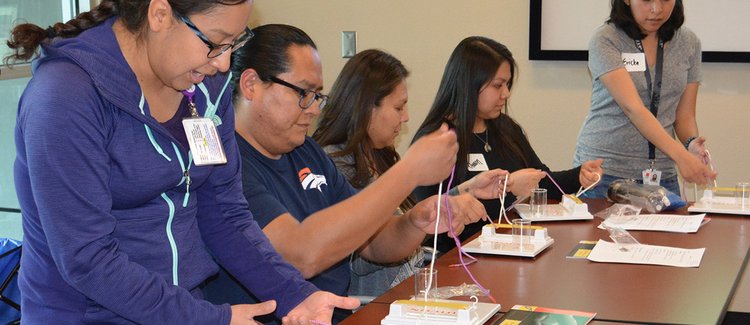
As an aspiring doctor, you may have heard about the projected physician shortage of up to 121,000 in the United States by the year 2030. As the need for more doctors grows, so does the need for a more diverse physician workforce, especially for American Indian and Alaska Native (AI-AN) populations. The Association of American Indian Physicians (AAIP) and the AAMC released a joint report called Reshaping the Journey: American Indians and Alaska Natives in Medicine that brings attention to this critical issue in health care, and we encourage premeds to take a look.
The report highlights key data on the representation of AI-AN students in medical schools and effective practices to attract, support, and graduate AI-AN physicians. It also speaks to the importance of the integration of AI-AN culture into the curriculum and training to prepare all future physicians to provide culturally responsive care. For matriculation to MD-granting institutions, there have been small increases in the number of matriculants reporting as American Indian and Alaska Native in combination with another race or ethnic group. Overall, though, the number of AI-AN medical students during the 2017-18 academic year was only 889 out of 91,391 total students, so there is still work to do.
Among the institutions that were highlighted in Reshaping the Journey, there were several notable efforts implemented across the medical education continuum — starting as early as elementary school and going through residency — to advance American Indian and Alaska Native representation in medicine. If you’re a student from the AI-AN community, we encourage you to look into participating in these programs that are making gains in producing AI-AN medical school graduates:
- The University of Minnesota Medical School, Duluth campus (UMN MSD) is the second largest producer of AI-AN medical school graduates in the nation, and for good reason. UMN MSD sponsors several premed outreach programs for AI-AN communities starting as early as kindergarten and offers community-based STEM and career exploration programs through partnership with area tribal communities.
- The INMED program at the University of North Dakota School of Medicine and Health Sciences includes a six-week summer academic enrichment program for AI-AN students in grades 7-12 followed by six-week summer program for students who are graduates of tribally controlled community colleges and a six-week MCAT® prep course for AI-AN college juniors and seniors.
- The Med-Start Program at the University of Arizona College of Medicine — Tucson has a long track record of success for its offerings to K-12 students. Additional collaborations at UA COM — Tucson include the Four Corners Medical Education Alliance, which features AAIP’s Pre-Admissions Workshop for college students primarily in Arizona, New Mexico, Colorado, and Utah.
- University of New Mexico Health Sciences Office for Diversity manages several pathway programs, including the Health Career Academy, which focuses on assisting high school students with math enrichment and health career exploration, the Dream Makers Health Career Program for middle and high school students, and the Interprofessional Health Outreach Program, which encourages members of the UNM Society of Native American Health Professions Students to assist with several initiatives across campus.
Other efforts include We Are Healers, a nonprofit organization focused on encouraging American Indian youth to envision themselves as a health professional, whether that be a nurse, dentist, or physician. Compelling stories featuring Native American health professionals are captured via video.
High school students may consider the National Native American Youth Initiative led by the AAIP for high school sophomores, juniors, and seniors, ages 16-18. Lastly, the Summer Health Professions Education Program (SHPEP) is a free, national summer program for freshman and sophomore college students interested in the health professions.
Take some time to read the report and research these programs to jumpstart your future career in medicine or simply learn about the importance of increasing diversity and inclusion in medicine.